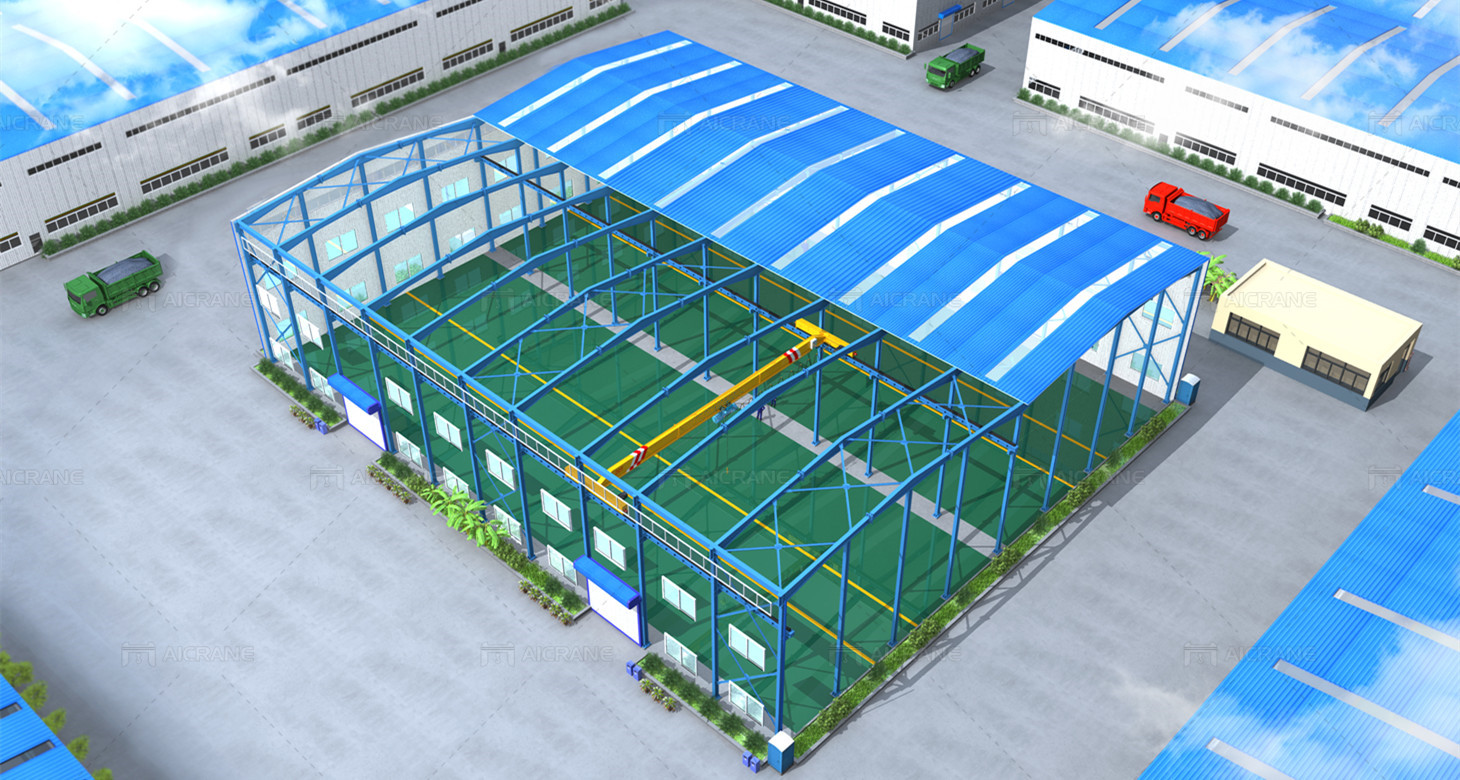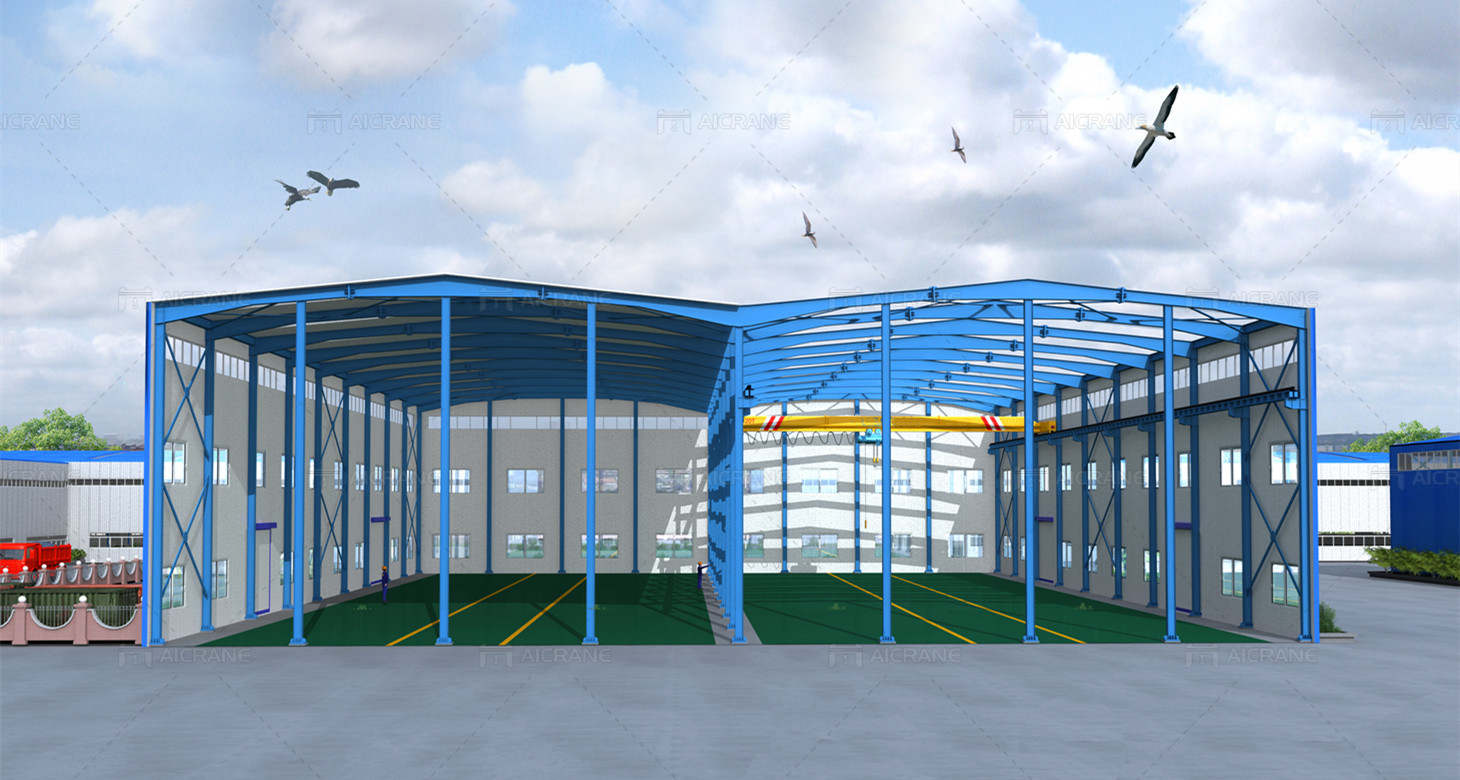Expanding a steel structure warehouse is a practical and cost-effective solution for growing businesses that need more storage or operational space. Unlike traditional concrete or wooden structures, steel warehouses offer significant flexibility in terms of design, scalability, and construction. Whether you need to accommodate more inventory, create additional workspace, or meet evolving business needs, expanding a steel structure warehouse can provide you with the room necessary to maintain and grow your operations efficiently.
In this article, we’ll explore the key steps and considerations for expanding a steel structure warehouse, including planning, design, construction, and how to maximize the benefits of your expanded space.

Assess the Need for Expansion
Before beginning the expansion of your steel structure warehouse, it’s essential to clearly identify the reasons behind the need for additional space. Some common drivers for warehouse expansion include:
Increased Storage Needs: As businesses grow, so does the need for storage. Whether you’re dealing with more inventory, larger products, or seasonal stock fluctuations, you may find that your current warehouse space is no longer sufficient.
Operational Growth: As your workforce grows or you introduce new processes or equipment, more floor space may be necessary to accommodate additional machinery, workstations, or employees.
Business Diversification: Expanding into new markets, products, or services may require specialized areas within the warehouse for packaging, handling, or storing new types of goods.
By understanding your exact requirements for expansion, you can better plan the dimensions and design of the extended warehouse.
Planning the Expansion
Planning is a critical step when expanding any warehouse, especially a steel structure warehouse. Here are several factors you should consider during the planning phase:
Space Availability: Assess the space around your existing warehouse to determine where the expansion can occur. Consider whether the extension will be made to the side, rear, or upwards. The layout of your current warehouse, the location of access points, and the surrounding land will play a significant role in determining the most feasible direction for expansion.
Zoning Laws and Building Permits: Before proceeding with construction, it’s essential to check local zoning laws and obtain the necessary building permits. Regulations may vary based on the location of the warehouse, and ensuring compliance will help avoid costly legal issues down the road.
Expansion Size and Design: Determine the size and design of the expansion based on your specific needs. This includes the width, height, and length of the additional space. In some cases, expanding vertically by adding mezzanine floors may be an option if land space is limited.
Budgeting: Expanding a warehouse can be a significant investment, so it’s crucial to budget carefully. The cost of materials, labor, and any disruptions to your operations during construction must be taken into account. Fortunately, the modular nature of steel structure warehouses means that expansion is typically more cost-effective compared to traditional building methods.
Structural Compatibility: Ensure that the design of the expanded warehouse is compatible with the existing structure. For example, the foundation of the existing building must be strong enough to support the additional weight if you’re adding more levels to the warehouse. Work with a structural engineer to evaluate the feasibility of your expansion plans.
Design and Customization Options
One of the primary advantages of a steel structure warehouse is its flexibility in design. When expanding, you have a variety of customization options to enhance both the functionality and appearance of the building.
Open Floor Space: Steel warehouses are typically designed with large open floor spaces that can be adapted to various uses. When expanding, consider how the new space will flow with the existing layout. Avoid creating awkward or isolated areas that could disrupt workflow or limit accessibility.
Modular Design: Steel structure workshops allow for modular expansion, which means that additional sections can be added with minimal impact on the existing building. This modular approach allows you to gradually scale your warehouse as your business grows.
Natural Lighting and Ventilation: If you’re expanding your warehouse, it’s an excellent opportunity to incorporate natural lighting and ventilation into the design. This can be achieved by adding skylights, windows, or large ventilation fans. Not only does this improve the work environment for employees, but it also reduces energy costs.
Custom Entry Points: Depending on your operations, you may need additional entry points for loading and unloading goods. Consider adding extra roll-up doors, dock bays, or personnel entrances as part of the expansion. Proper planning of these access points ensures that goods and people can move efficiently through the warehouse.

Construction Process
Once the design and planning phases are complete, the actual construction of the steel structure warehouse expansion begins. Steel structures are known for their rapid construction timelines compared to traditional buildings, but there are still several important steps to follow:
Site Preparation: Before construction can begin, the site must be prepared. This includes clearing the land, leveling the ground, and laying the foundation. If the expansion involves adding height to the warehouse, the existing foundation may need reinforcement.
Erecting the Steel Framework: Steel frames are prefabricated offsite and then delivered to the construction location. This speeds up the building process and minimizes on-site disruption. Once the steel components arrive, they are assembled using bolted or welded connections.
Installing Roof and Wall Panels: After the steel framework is in place, roof and wall panels are installed. Steel panels are highly durable and weather-resistant, making them ideal for protecting goods and equipment inside the warehouse.
Final Touches and Interior Work: Once the exterior is complete, any necessary interior work, such as installing HVAC systems, electrical wiring, lighting, and shelving, can begin. Depending on the purpose of the expansion, you may also need to install specialized equipment or flooring.
Maximizing the Use of Expanded Space
After the expansion is complete, it’s essential to make the most of the new space in your steel structure warehouse. Here are some tips for optimizing the newly added area:
Organized Storage: With the additional square footage, it’s crucial to optimize how goods are stored. Implement vertical storage solutions like racks and shelves to maximize the use of floor-to-ceiling space. This can increase storage capacity without overcrowding the warehouse floor.
Efficient Workflow: If the expansion includes areas for production or assembly, ensure that the workflow is designed for maximum efficiency. For example, position workstations close to storage areas to minimize the distance workers need to travel when retrieving materials.
Improved Safety Measures: A larger warehouse may require more stringent safety protocols. This could involve updating fire safety systems, installing additional exit points, and ensuring that any machinery used in the new space is safely positioned.
Regular Maintenance and Long-term Planning
As with any warehouse, regular maintenance is crucial to keeping the expanded steel structure warehouse in top condition. Regular inspections of the steel frames, roof, and walls will ensure that the building remains secure and functional for many years.
Additionally, as your business continues to grow, it’s wise to consider how future expansions might be incorporated into the existing structure. A modular design allows for further scalability, so keep this in mind when planning future growth.
Expanding a steel structure warehouse is an effective way to accommodate business growth, streamline operations, and improve overall efficiency. With careful planning, thoughtful design, and attention to detail, you can seamlessly expand your warehouse to meet the evolving needs of your business. Whether you require more storage space, additional work areas, or simply want to future-proof your business, expanding a steel structure warehouse offers a practical, cost-effective solution. Get your steel structure from Aicrane.